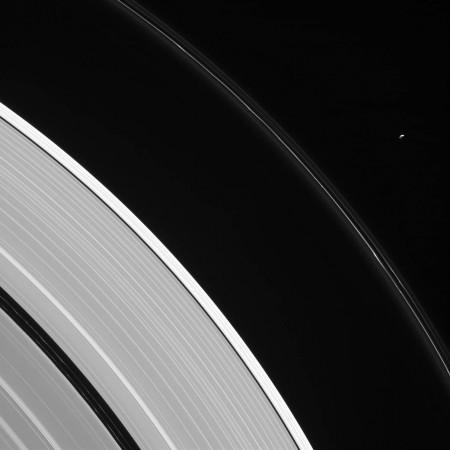
NASA's Cassini spacecraft has come up with some amazing images of Saturn's moon Pandora. The high-resolution images were released by the American space agency on Thursday, December 22.
Here are a few things you need to know about the potato-shaped moon in order to be the life of that space-themed Christmas party.
1. Pandora, a potato-shaped moon, is coated in a fine icy material. This is actually unusual because Saturn's other moons are pretty devoid of debris.
2. The moon Pandora was discovered in 1980 by the Voyager 1 after it took photos as it flew by. At the time, it was named S/1980 S 26 (we agree it's far less cool than Pandora, which it was named in 1985).
3. Pandora is about 25.3 miles (40.7 km) in radius. It orbits 88,000 miles (142,000 km) away from Saturn, taking 15.1 hours to go around the ringed planet.
4. Pandora was the first human woman created by the gods. She is notorious in mythology for having opened a jar (NOT a box ) which contained all the ills of the world. After letting them all out, she closed the lid leaving only hope inside. As you do!
) which contained all the ills of the world. After letting them all out, she closed the lid leaving only hope inside. As you do!
5. Pandora was once thought to be a Shepherd moon of Saturn. A shepherd moon is a moon that exists within the ring system of a planet. It was later, however, found that it was not a shepherd moon
And just in case you were wondering, Saturn has 62 moons, but only 53 have names and only 13 have diameters larger than 50 km. Titan and Enceladus are the most famous of Saturn's moons. In fact, Titan is the second-largest moon in the solar system , after Jupiter's Ganymede.
, after Jupiter's Ganymede.
There are over 150 moonlets within Saturn's rings. We know this because we've detected slight disturbances in the surrounding ring material, but this is thought to be only a minute sample of the total population of such objects.

















